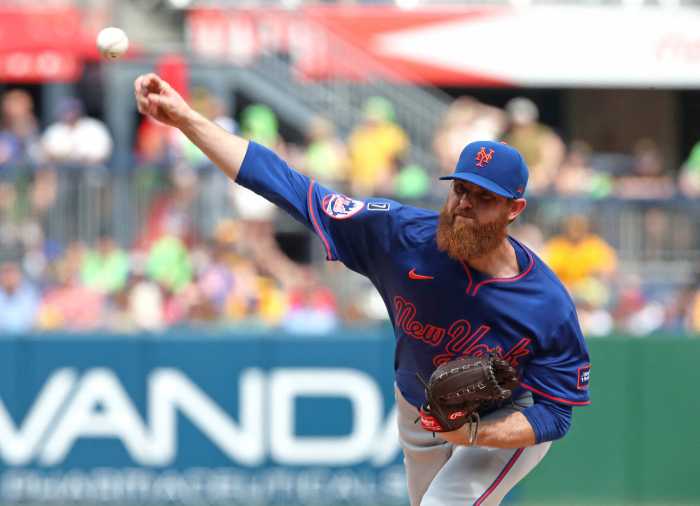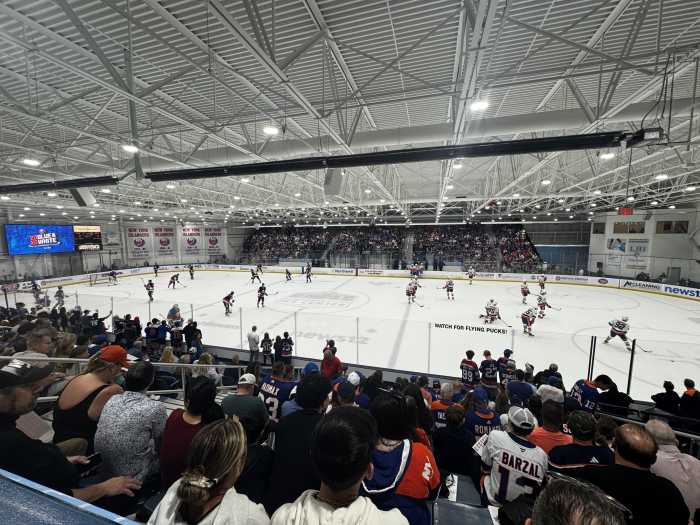BY MICHELE HERMAN | Vacant 5.5-acre chunks of prime Manhattan landfill with river views on three sides don’t come along often. I went to a Community Board 2 presentation at the Greenwich Village Middle School, at 75 Morton St., last week to learn more about what’s in store for the one at Gansevoort Peninsula near the northwestern edge of the Village.
This rectangular parcel that juts into the Hudson is in the process of becoming part of Hudson River Park now that the Department of Sanitation facilities that used to sit on it have been demolished.
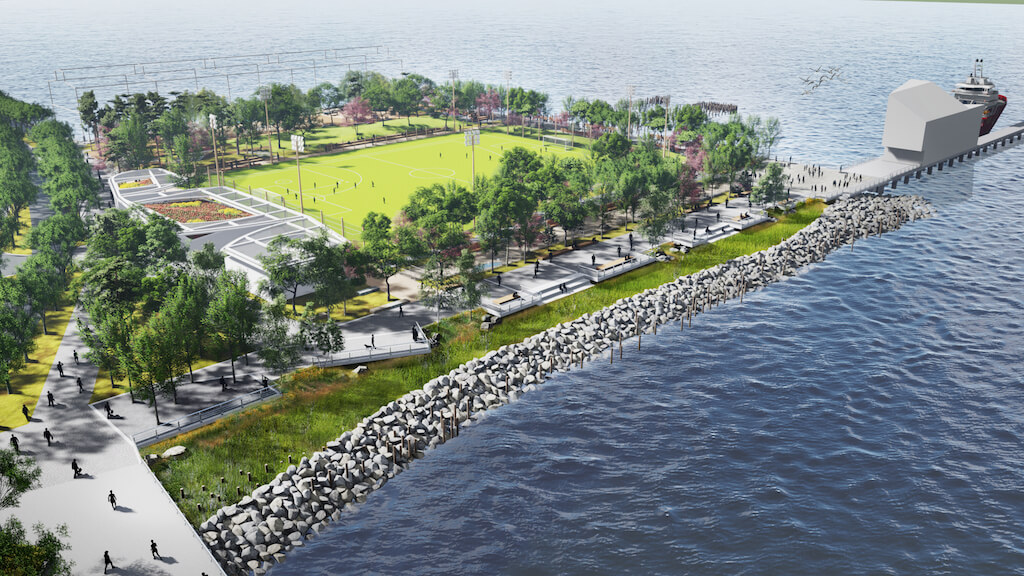
Needless to say, different constituencies are drooling at the possibilities being presented by the new section of the park. Actually, to judge by those in the audience of roughly 100 who spoke up during the question-and-answer period after the presentation, there are mostly two constituencies: the large, well-organized school soccer-team community (parents, coaches, league directors and after-school program organizers) fighting for the biggest possible ball field, and assorted others quietly advocating on behalf of passive green space.
Some things at C.B. 2 never change. The faces of the soccer proponents were mostly new since I last attended a meeting, but their ardor was the same as ever. However, I was pleasantly surprised by the civil, even good-natured tone of the meeting.
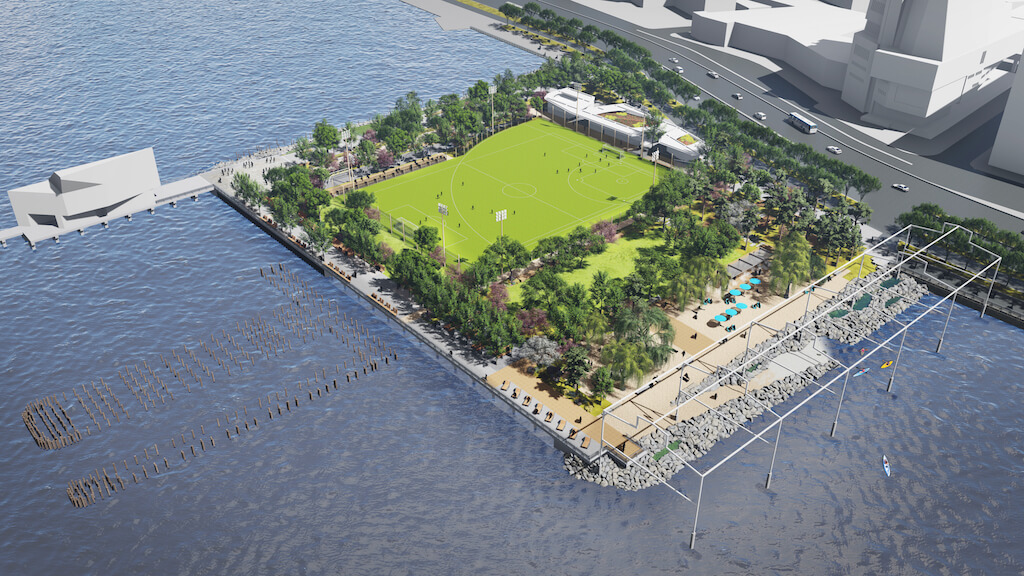
The first brave, witty soul to speak out for passive green space began his statement by saying, “Can I risk being lynched?” The second said to the soccer people, “I know you’ll win, but a ball field is exclusionary. I’m advocating for everyone else. As we teach our kids: You have to share.”
The Hudson River Park Trust, the park’s governing state-city authority, hired James Corner Field Operations, a landscape architecture firm known for connecting city dwellers to nature and for integrating culture and history into its designs, to come up with a concept.
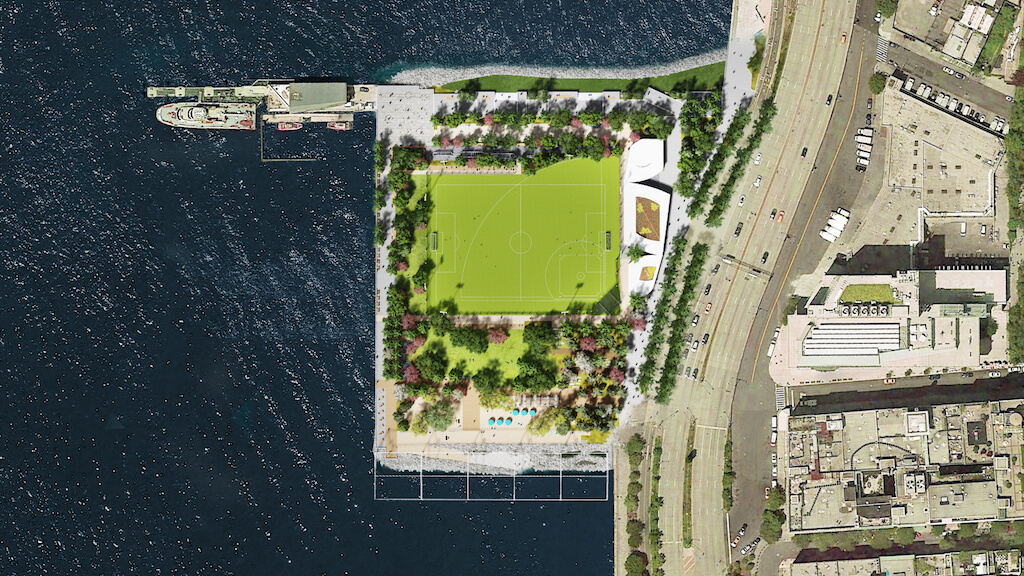
Field Operations’ presentation followed up on the initial one in March, with a third scheduled for Sept. 4. The design process is somewhere in the middle stages, which means there is a basic concept and many lovely color sketches, but still some wiggle room as the designers continue to refine the concept and respond to community feedback. According to Noreen Doyle, the Trust’s executive vice president, Gansevoort’s construction budget of $50 million is in place and the building of the park is expected to take one and a half to two years.
A space of 5.5 acres (an acre smaller than Union Square) may seem like a lot, but Lisa Tziona Switkin, senior principal at Field Operations, explained that the designers and engineers have to work with a large number of conditions and givens. The givens include passive recreation, no commercial uses or development, a beach, a maintenance-and-operations building, a comfort station, a concession and a permanent art installation by David Hammons — sponsored by the Whitney Museum of American Art — that is at once enormous and unobtrusive, because it’s a stainless-steel ghost frame of the pier shed that once stood on the peninsula’s southern edge.
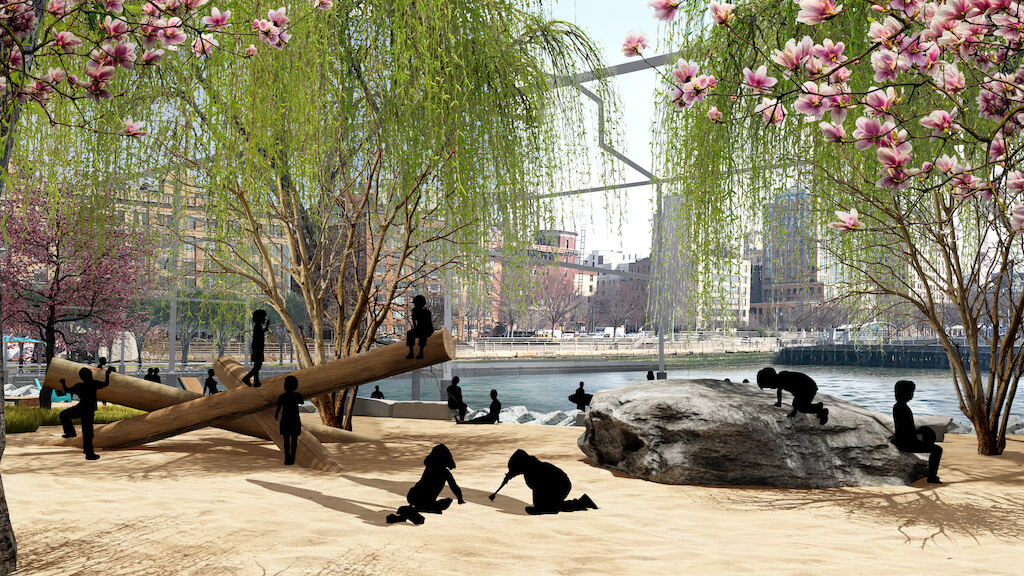
The conditions consist of unexpectedly lively wave action on Gansevoort’s south side, as revealed by underwater modeling, which makes the dream of an actual sand beach unachievable. Instead there will likely be sand yielding to new riprap (loosely packed rocks or concrete chunks) at the shoreline. Other conditions include the C.S.O. regulator (the underground sewage drainage system); unstable soil (the technical term, Switkin explained, is “pudding”) on both the north and south edges of the 19th-century landfill; the recently installed Spectra high-pressure gas pipeline, and the Fire Department road and turnaround that has to accommodate the largest fire trucks, which connects to the fire-boat station at Gansevoort’s northwestern corner.
As currently conceived, the park would include a ball field with artificial turf in the center of the space, oriented east-west and elevated somewhat above the level of the manmade peninsula. The building housing the M&O, restrooms and concession would be on the inland side and broken into three separate low-slung structures to allow for views between them, with a single green roof above. To the north the designers envision a series of salt marsh “nooks”; the unavoidable fire road leading to the Fire Department boat stationhouse, softened with lawns and gardens; an outdoor “gym” with exercise equipment, and a dog run that, at 250 feet, would actually be long enough for running. To the west there would be furniture — including seating — and trees, a rolling lawn for sunset views and a picnic grove. To the south there would be kayak access (though no rentals), tidal pools for education and exploration, and the beach. Switkin said she hopes some of the trees would be willows, which can thrive in sandy soil.
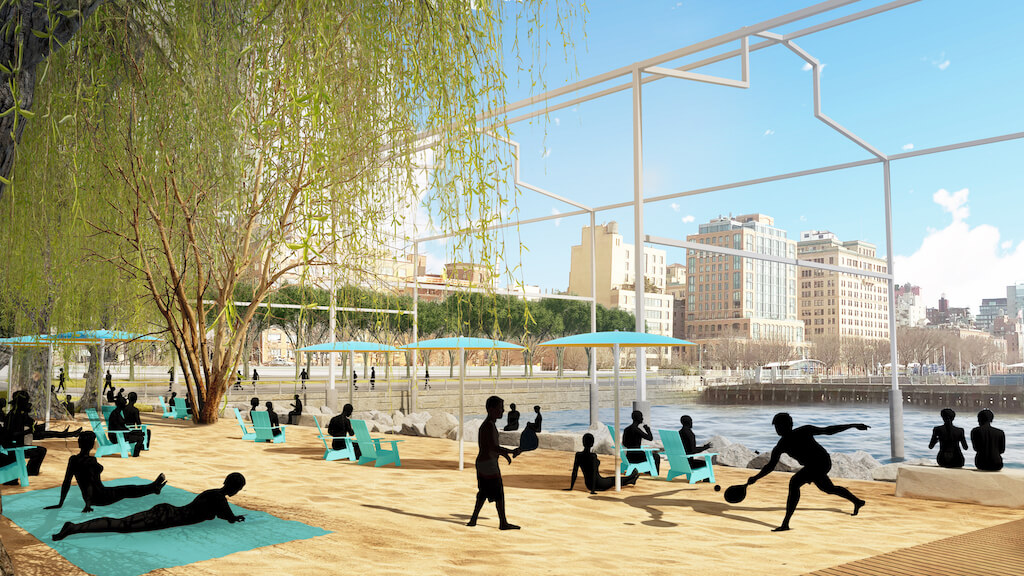
The aforementioned wiggle room in the design comes down mostly to the size of the ball field. As young soccer players grow, they require bigger fields, with designations that correspond to kids’ ages. There is plenty of room on Gansevoort for baseball and for two U-10 (“under age 10”) soccer practice fields. One U-11 fits comfortably, and one U-12 fits. The trouble is that a U-13 field — which is full size for middle- and high-school kids but still not big enough for regulation playoffs — does not fit on the peninsula without cutting into some of the passive features and probably eliminating the space for the outdoor gym.
The soccer supporters are pushing hard for the largest field. Jacqui Getz, principal of the 75 Morton middle school, wrote a letter of support, noting the school will be adding an additional grade in the fall for a total of 900 students.
“We have no access to a field; there’s a shortage,” Getz wrote. “Kids commute two hours [back and forth] to East River Park to play an hour of sports. We urge the full-sized field so we can serve the local community.”
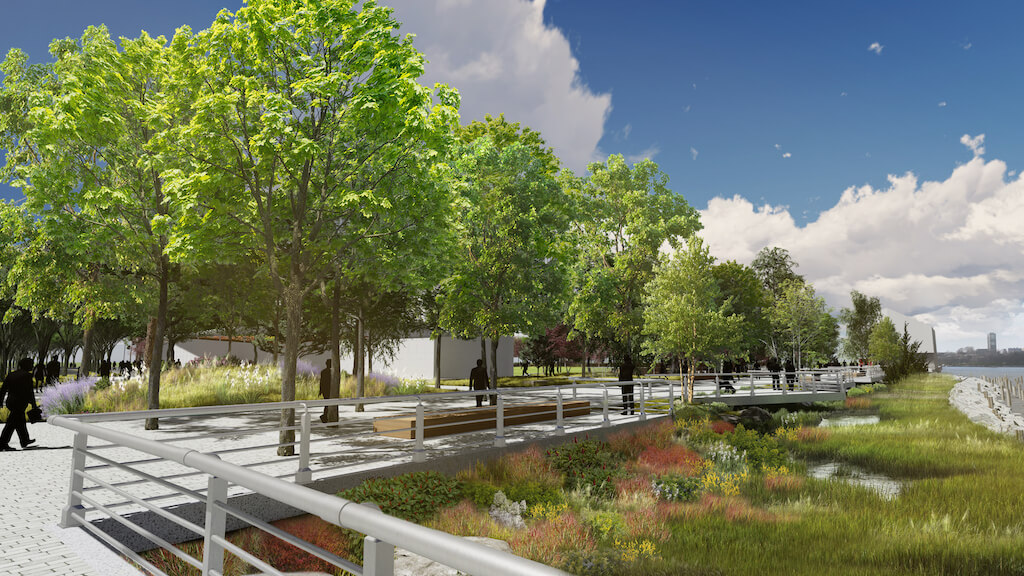
Others chimed in with ever-more dire statistics. There are only four U-13 fields in the city. There are only three gyms Downtown to serve nine schools. Those existing fields are booked seven days a week for 10 hours, so overused that they have become unhygienic. The Downtown Soccer League will have to turn kids away for the first time.
What’s more, virtually all those overbooked fields are slated to close soon for work or renovation. East River Park, with its playing fields, is expected to be off limits for four years due the East Side Coastal Resiliency Project. Meanwhile, the figure being tossed around for the eventual redevelopment of Pier 40, at W. Houston St., with its huge playing field, is eight years.
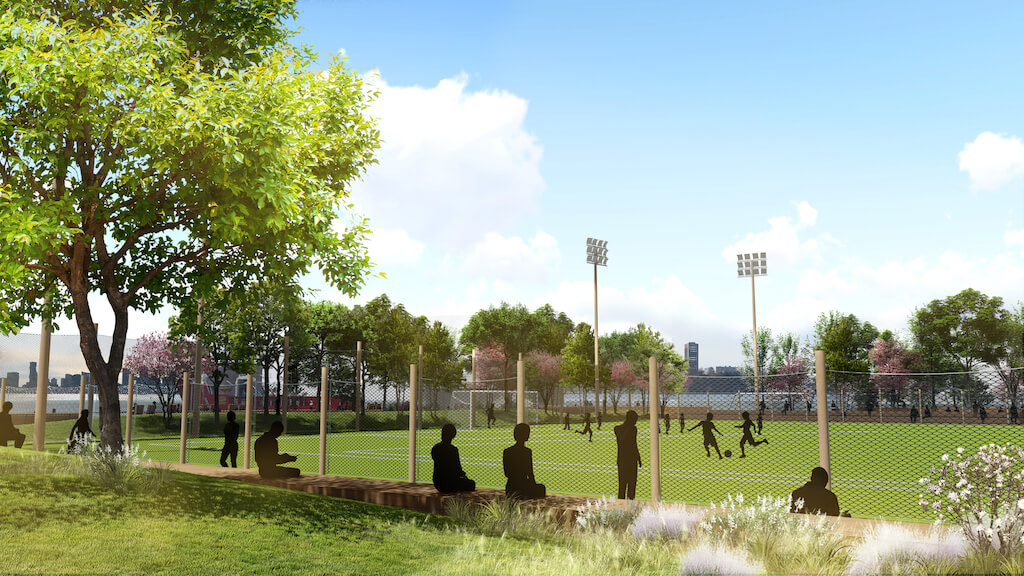
Switkin and Doyle both took pains to assure the audience that the U-13 option is on the table.
“We are not trying to be evasive,” Switkin said. “The large field is an option but it’s not as fully developed yet. We are hoping for consensus tonight.”
There were also many questions about drainage of the field, since Gansevoort Peninsula flooded during Hurricane Sandy, and the artificial turf fields at Pier 40 get soaked and unusable when it rains.
Sounding like a prophet, Kevin Quinn, the Trust’s senior vice president, said, “This field will drain, so help me.”



